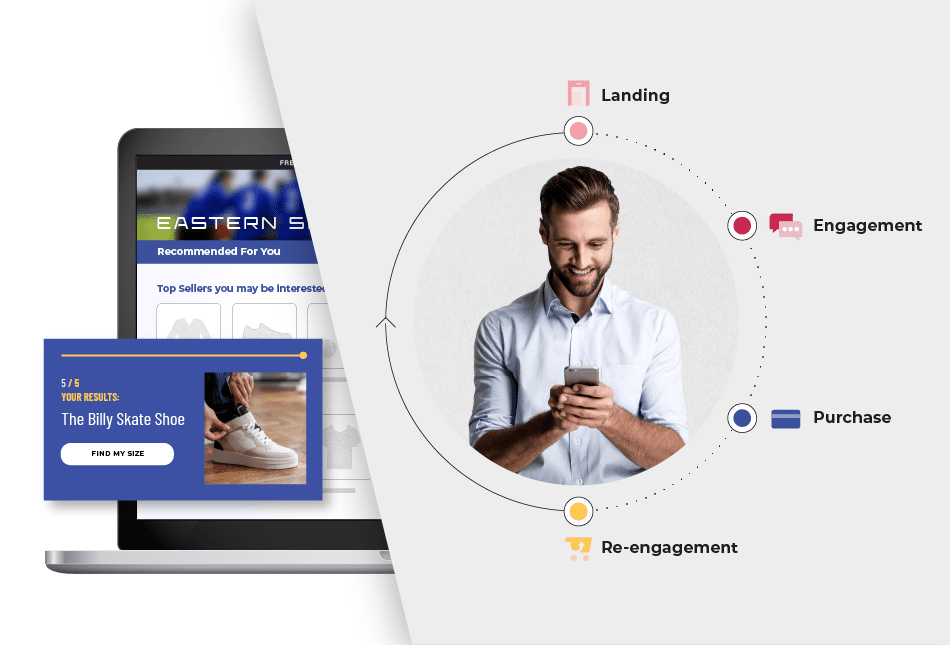INCREASE SALES AND AOV
Personalize CX to Boost Ecommerce Sales
Discover 5 best practices that engage prospects and customers during all stages of the purchase process – from website to app to brick and mortar.


#1: Establish Core Personas for Successful Personalization
#2: Develop a Customer Journey Map
Create a map of the typical customer journey, from product discovery and selection, to purchase and post-purchase.
Consider ways a customer might interact with your brand during each stage and figure out how to enhance that experience. It might be something as simple as mobile alerts when a product is back in stock, or an automatic discount if a product is left in the cart.
In-store purchase data can also be used to create unique web experiences. By just identifying a customer’s favorite shopping category, you can tailor the homepage for their next website visit.

5-Minute Read: The Power of Journey Analytics
Uncover new personalization opportunities for better testing and experimentation.


#3: Use Context to Deliver Real-Time Ecommerce Personalization
Consider the purchase history, current location, previously viewed products, and other information a customer has shared with you over time to help deliver more relevant messaging. Take your efforts a step further by using in-session data to create the ultimate shopping experience.
See how Destination XL uses geotargeting to place weather-appropriate products in front of website visitors. They also use IP addresses to create dynamic welcome messages for international visitors.
#4: Test Responses to Needs and Actions
While returning customers might be more likely to add recommended items to their cart, new customers could be more interested in discounts. Testing various offers, product recommendations, or language can help you unlock the key to increasing customer loyalty (and AOV).

40 Unrivaled Personalization Best Practices
Find out how companies drive 40% more revenue in this personalization playbook.


#5: Create a Five-Star Communication Plan
Ask yourself what customers might need two days before their delivery date or two hours after they receive their order. If you know when your customers’s order will arrive, what can you offer to make the experience better? What do they need to know and when?
Develop a communication plan based on timing in relation to the order and anticipate and respond to customer needs before they reach out to you with questions.
By anticipating customers’ needs, you help create a seamless experience that makes the process of shopping smooth and easy.
Ready to see what Monetate can do you for?
Discover how you can start using data-driven personalization now.







